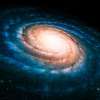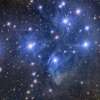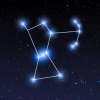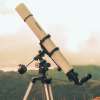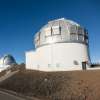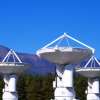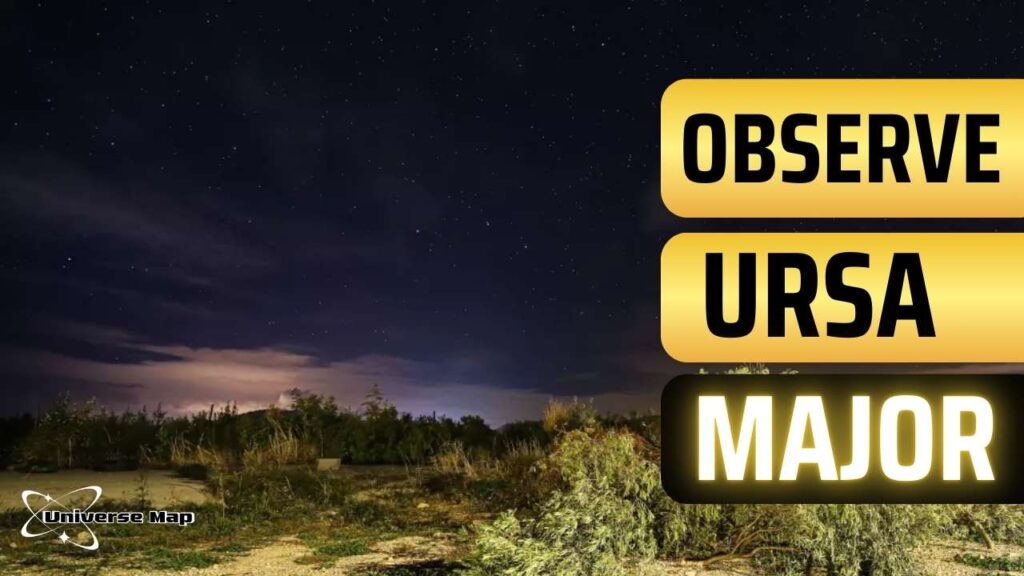
The Constellation Beyond the Big Dipper
Most skywatchers recognize Ursa Major for its iconic Big Dipper, but far fewer realize that this constellation is home to some of the most impressive galaxies in the northern sky. For amateur astronomers and astrophotographers in 2025, Ursa Major represents one of the most fruitful deep-sky hunting grounds—offering bright, accessible galaxies ideal for visual observation and long-exposure imaging.
High in the northern sky and visible for much of the year, this constellation allows observers to explore multiple galaxy types in a single night—from spiral giants to interacting systems and tidal dwarfs.
What Makes Ursa Major a Galaxy-Hunter’s Paradise
Year-Round Visibility in the Northern Hemisphere
Ursa Major is circumpolar for observers above 40°N latitude, meaning it never dips below the horizon. From January to July, it climbs high in the sky during prime viewing hours, especially during the spring galaxy season.
This elevation minimizes atmospheric distortion and allows observers more time per night to focus on their targets—an advantage particularly useful for stacked exposures in astrophotography or detailed visual sketching.
A Rich Galaxy Neighborhood
Ursa Major contains not just isolated galaxies, but multiple galaxy groups, including:
- The M81 Group, featuring M81, M82, NGC 3077, and more
- The M101 Group, with the sprawling Pinwheel Galaxy and companions
- Dozens of additional spirals, edge-ons, irregulars, and dwarfs
With such a variety of galaxy types packed into a single constellation, Ursa Major allows skywatchers to hop between multiple deep-sky objects in one session, something few other constellations offer.
Bright Galaxies Ideal for All Skill Levels
Several of Ursa Major’s galaxies are bright enough for small telescopes and short-exposure images. This makes it an excellent region for both beginners learning the ropes and experienced observers pushing the limits of their gear.
Key benefits include:
- Galaxies like M81 and M82 that are visible under light-polluted skies
- Structures like spiral arms and dust lanes that show up well in 6–10 inch telescopes
- Target diversity that encourages progression and challenge for learning observers
What Equipment Works Best for Ursa Major in 2025
Visual Observers
- Small Refractors (3–5 inches): Great for wide-field views of M81/M82 and galaxy groups
- Medium Dobsonians (6–10 inches): Ideal for resolving detail in spiral structure, core brightness, and faint dwarfs
- Tracking Mounts (Optional): Helpful for extended viewing, but not mandatory
Use moderate magnification eyepieces (50x–150x) to balance contrast and field of view, especially when hopping between galaxies.
Astrophotographers
- Equatorial Mount with Tracking and GoTo: Essential for long exposures
- Cooled CMOS/CCD Cameras: Capture faint arms, gas clouds, and tidal tails
- Autoguiding Setup: Ensures sharp images for deep exposures beyond 60 seconds
- Light Pollution Filters: Recommended for suburban imaging (CLS, UHC)
With modern gear and software (PixInsight, AstroPixelProcessor, DeepSkyStacker), you can extract incredible detail—even from Bortle 5–6 skies.
2025 Observation Calendar – When to View
Timing your session properly ensures the best possible result. Here’s a monthly breakdown for northern observers:
| Month | Visibility Window | Notes for Observers |
|---|---|---|
| January | Late night (after 2 AM) | M81 and M82 are visible |
| February | After midnight | Good for core galaxies |
| March | High at 1–2 AM | Peak observing begins |
| April | Overhead at midnight | Ideal for imaging large targets |
| May | Early evening to midnight | Full constellation visible |
| June | Sets early in the night | Catch early galaxies |
Try to observe during the new moon phase each month and under clear, low-humidity skies for optimal clarity.
Galaxy Types in Ursa Major
This constellation is not dominated by a single type—it contains a mix that makes it particularly engaging:
- Grand-Design Spirals – M81, M101
- Irregular Starburst Galaxies – M82
- Edge-On Spirals with Dust Lanes – NGC 4013, NGC 5907
- Tidal Dwarf Galaxies – Holmberg IX, NGC 2976
- Faint Companion Galaxies – Numerous small galaxies near M81 and M101
This diversity allows observers to study galaxy morphology, interaction-driven features, and evolutionary patterns right from their backyard.
M81 and M82 – A Dynamic Duo in the Night Sky
Located just 12 million light-years from Earth, Messier 81 (M81) and Messier 82 (M82) are the brightest and most accessible galaxies in Ursa Major. Positioned close together in the sky—just under 0.75° apart—they can easily be framed within the same telescope field or camera sensor, offering a breathtaking double-galaxy view.
These two galaxies are gravitationally bound and interacting, making them both visually impressive and scientifically rich targets.
Observing M81 – Bode’s Galaxy
Galaxy Type:
Grand-Design Spiral (SA(s)ab)
Visual Features:
- A bright, concentrated core
- Two elegant spiral arms visible under dark skies
- Slightly inclined disk offering a three-dimensional appearance
Telescope View:
Even small refractors (~80mm) reveal M81’s bright nucleus. Medium to large aperture scopes (~6–10 inches) under dark skies can resolve the spiral arms, dust lanes, and extended disk.
Imaging Potential:
M81 is a top-tier target for beginners and advanced imagers. Long exposures with proper calibration reveal:
- Blue spiral arms rich in young stars
- Faint outer halo structures
- Central bulge with subtle color gradations
It responds well to both broadband RGB and narrowband Ha imaging.
Observing M82 – The Cigar Galaxy
Galaxy Type:
Starburst Irregular (I0 or peculiar)
Visual Features:
- An elongated, edge-on disk resembling a cigar shape
- Dark dust lanes crisscrossing the galaxy’s core
- Bright central region with hints of outflows
Telescope View:
M82 shows dramatic structure even through modest instruments. A 6-inch telescope under dark skies can reveal the dusty band cutting through the core, giving it a textured appearance.
Imaging Potential:
This galaxy shines in long-exposure images, where its starburst activity becomes visible:
- Hydrogen alpha filters reveal red outflows—stellar winds driven by intense star formation
- Color images show orange and brown dust lanes, along with hot blue clusters of stars
- High-resolution imaging reveals structural complexity rarely seen in galaxies this close
M82 is among the most photogenic galaxies in the sky for 2025.
M81 and M82 as an Observing Pair
Angular Separation:
Approximately 38 arcminutes apart
Ideal Eyepieces for Visual Pairing:
- Use low to moderate power (30x–80x) to frame both galaxies together
- Wide-angle eyepieces (68°–82° AFOV) enhance immersive viewing
Framing for Astrophotography:
- Use camera sensors with ~500–1000mm focal length equivalents to fit both in frame
- Pair with good guiding and total integration time of 2–5 hours for deep structural detail
Best Time to Observe:
From February through May, when Ursa Major is high in the sky during moonless nights.
Tips for Getting the Best View
- Dark Skies Help: While both are bright, faint outer features require low light pollution
- Transparency Matters: Look for nights with low humidity and minimal haze for better contrast
- Avoid High Moon Illumination: The contrast in M82’s dust lanes and M81’s spiral arms is easily washed out by moonlight
For astrophotographers, shoot calibration frames (darks, flats, bias) to improve image quality, and consider drizzle integration for enhanced resolution if guiding and tracking allow.
Messier 101 – The Pinwheel Galaxy
Galaxy Type:
Face-on Grand-Design Spiral (SAB(rs)cd)
Location and Size:
M101 is located roughly 21 million light-years away and spans over 170,000 light-years—larger than the Milky Way. Its large angular size (~28 arcminutes) and delicate arms make it an exquisite, though challenging, target.
Visual Observation:
Through telescopes under dark skies:
- Small scopes (3–5 inches) reveal a diffuse glow and a bright core
- Medium scopes (6–10 inches) under excellent conditions show hints of spiral structure
- Requires very dark, transparent skies to appreciate its full extent
Because of its low surface brightness, M101 benefits from averted vision and careful sky adaptation.
Astrophotography Potential:
This galaxy is a favorite among deep-sky imagers for its intricate spiral structure and active star-forming regions. Long integration times (>4 hours) reveal:
- Pink HII regions (star-forming nebulae) scattered along the arms
- Blue star clusters and yellowish central bulge
- Subtle features like flocculent arms, background galaxies, and dust arcs
Imaging with hydrogen-alpha filters enhances emission regions, making it ideal for narrowband processing.
Companion Galaxies of M101
M101 interacts gravitationally with several smaller companions, including:
- NGC 5474 – Asymmetrical dwarf irregular
- NGC 5477 – Faint companion close to the spiral arms
- Holmberg IV – Dwarf galaxy located in the group outskirts
These galaxies add interest to wide-field images and help tell the story of tidal influence and ongoing evolution in the M101 Group.
Other Notable Spirals in Ursa Major
NGC 4013 – The Edge-On Spiral
- Features a prominent dust lane bisecting the galactic disk
- Resembles a miniature version of NGC 891
- Excellent for 6-inch or larger scopes under dark skies
- Shows incredible contrast in images, especially with long exposures
NGC 3953 – The Barred Spiral Galaxy
- Well-defined central bar and tight spiral arms
- Located near the boundary of Ursa Major
- Bright enough for 8-inch telescopes
- Often overlooked but photogenic in deep RGB images
NGC 3675 – Symmetrical Spiral
- A classic spiral with smooth arms and a bright nucleus
- Located close to the M81/M82 region
- Suitable for both visual and imaging attempts
NGC 2681 – The Compact Multi-Ringed Galaxy
- Shows a triple-ring structure in deep exposures
- Displays a high surface brightness core
- Rewarding for advanced imagers looking for complexity
Observing Strategy for Spiral Galaxies
When targeting multiple spirals in one night, consider the following:
- Plan your session by right ascension to minimize telescope slewing
- Use a low-power eyepiece (25–40mm) for galaxy hunting, then switch to high power (8–15mm) for detail
- In imaging, frame galaxies with enough room for spiral extensions and companions
- Adjust exposure based on surface brightness rather than size or magnitude
Dark skies, good seeing, and longer integration times are crucial for faint spirals with low contrast arms.
Beyond the Famous – Exploring the Overlooked
Ursa Major doesn’t just house showpiece galaxies. It also contains a diverse collection of faint dwarfs, tidal companions, edge-on spirals, and distorted systems—perfect for intermediate to advanced observers looking to expand their challenge list.
These targets are ideal for pushing equipment, developing observing skills, and deepening one’s understanding of galaxy morphology, interaction, and evolution.
Holmberg IX – A Tidal Dwarf Companion
Overview:
- Companion to M81, likely formed from tidal debris
- Located just ~10 arcminutes from M81
- Extremely faint, low surface brightness galaxy
Observing Notes:
- Visible only under excellent dark-sky conditions with medium to large telescopes (10+ inches)
- Best seen with averted vision and wide-field eyepieces
- In imaging, appears as a faint, irregular patch with mottled structure
Why It Matters:
Holmberg IX offers insight into tidal dwarf galaxy formation—a product of past galaxy interactions that shaped the M81 Group.
NGC 3077 – A Distorted Irregular
Location:
Part of the M81 Group, close to M81 and M82
Features:
- Compact irregular with distorted outer halo
- Shows signs of gas stripping and interaction
- Appears slightly elliptical through telescopes
Visual and Imaging:
- Easily spotted in small scopes as a fuzzy oval
- Advanced imaging reveals faint tidal tails and hydrogen gas bridges connecting to M81 and M82
NGC 4605 – A Bright Dwarf Galaxy
- One of the brighter dwarf irregulars in Ursa Major
- Located near the M101 Group
- Shows bright central region with hints of structure in 8–10 inch telescopes
- Imaging reveals patchy star-forming regions and asymmetrical disk
This target is great for those exploring the transition between dwarfs and full spirals.
NGC 5585 – Faint Spiral Galaxy
- A loose, low surface brightness spiral
- Contains a bright core and fragmented arms
- Ideal for large telescopes or long-exposure imaging
Interesting as a Milky Way analog in early stages of disk development.
NGC 5907 – The Splinter Galaxy
Type:
Edge-on Spiral Galaxy
Features:
- Razor-thin appearance with central bulge
- Prominent dark dust lane visible in both visual and imaging
- One of the best examples of disk structure in edge-on orientation
Observing and Imaging:
- Easily visible in 6-inch scopes
- Imaging reveals subtle warping and faint halo structures
This galaxy demonstrates the structural elegance of spiral disks and challenges imagers to reveal fine detail.
Building an Observation Project in Ursa Major
To turn this list into a meaningful personal project, consider the following approach:
1. Themed Observation Nights
Choose a theme such as:
- Spiral galaxies only
- Edge-on disk structures
- Interacting groups
- Starburst vs passive dwarfs
2. Progression by Equipment Capability
Begin with bright galaxies like M81/M82, then move toward fainter or more complex targets (e.g., Holmberg IX, NGC 4605).
3. Imaging Series
Create a comparative set:
- Spiral vs irregular structure
- Isolated vs interacting galaxies
- High surface brightness vs low surface brightness profiles
4. Record and Share
Maintain an observation log or imaging gallery and share with platforms like:
- AstroBin
- Cloudy Nights forums
- Universemap.net community (if applicable)
Final Thoughts
Ursa Major is far more than the Big Dipper. It’s a deep-sky constellation offering hundreds of hours of rewarding exploration for observers and astrophotographers at every level.
From world-famous galaxies like M81, M82, and M101, to lesser-known companions like Holmberg IX and NGC 5907, Ursa Major is a complete package—a gateway into the structure, diversity, and beauty of galaxies across the universe.
Whether you are observing with a modest telescope from your backyard or capturing hours of exposure from a dark-sky site, Ursa Major in 2025 is your invitation to discover the galaxies above.

